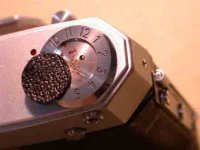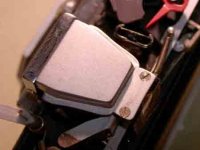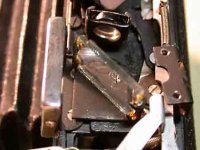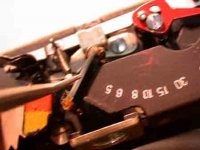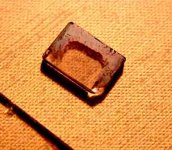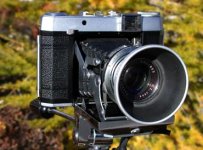whitecat
Lone Range(find)er
Any Certo 6 users out there? One of my favorites!
KoNickon
Nick Merritt
I got one recently -- have only shot one roll through it but I love it. Very nice lens; pretty easy to use also. A substantial piece of equipment.
fgianni
Trainee Amateur
I got one too, Newton-Ellis serviced mine, now the RF patch is clearly visible and focusing is spot-on, the lens is superb and the camera pocketable (if you have big pockets LOL) I love it!
adep
Established
I got one not long ago, I've sent it to Jurgen Kreckel for a re-silvering of the rangefinder and a CLA. I shot one roll, by scale focusing, before I sent it off.
here's one of the shots @2.8:
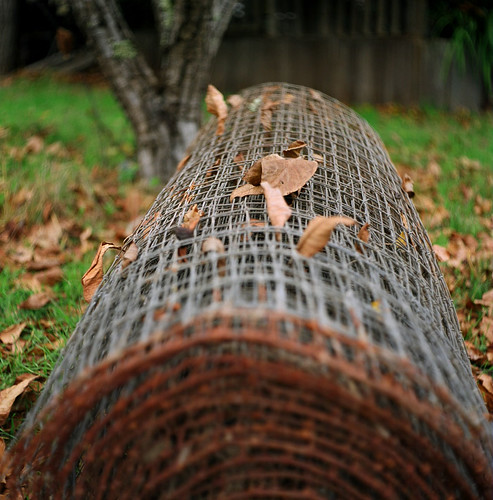
here's one of the shots @2.8:

mgd711
Medium Format Baby!!
another Certo Six user here. I've run a couple of rolls of film through mine. Its a really nice camera but I prefer the Agfa Super Isolette and Balda Super Baldalux's I have.
Mike
Mike
P C Headland
Well-known
And another user. Mine could do with the RF mirror being resilvered, but is in otherwise superb condition. Nice lens, and feels very well made.
I prefer the Iskra, but the Certo feels better built, better even than the Super Ikonta III I have (which is also in very nice condition).
Has anyone here tried fixing the RF mirror themselves? I've don the mirror in a non-coupled RF camera, but am hesitant to rip into this camera myself just yet.
I prefer the Iskra, but the Certo feels better built, better even than the Super Ikonta III I have (which is also in very nice condition).
Has anyone here tried fixing the RF mirror themselves? I've don the mirror in a non-coupled RF camera, but am hesitant to rip into this camera myself just yet.
literiter
Well-known
I have a Certo 6 acquired a while ago. I cannot believe the superb quality of this camera. The Tessar lens (coated) must be as good as my Hasselblad in that I can't really tell the negatives apart.
It has a certain modern industrial look to it with it's machined, stainless steel struts and rather plain looking top cover. To those of us that really appreciate the cachet of the Super Ikontas this might not do.
I'm afraid that if it weren't for it's really solid construction (perhaps surpassing the Ikontas, Iskras, Agfas, Weltas and Baldas etc.) it is a camera I'd overlook.
Notes of interest:
-To achieve parralax correction the lens seems to reposition itself with respect to the finder.
-I've installed new mirrors. A front surface mirror and a "beamsplitter" which is a partially silvered mirror. This really worked well! Check Edmund Scientific! Cutting these mirrors to size is a bit of a task I'm afraid.
I do have an issue. The lens is a Tessar in a Prontor shutter. The shutter cocking arm and the aperture lever will interfere with the closing of the camera unless perfectly positioned. I have tried a compur shutter with the same issues. Anyone have a suggestion?
It has a certain modern industrial look to it with it's machined, stainless steel struts and rather plain looking top cover. To those of us that really appreciate the cachet of the Super Ikontas this might not do.
I'm afraid that if it weren't for it's really solid construction (perhaps surpassing the Ikontas, Iskras, Agfas, Weltas and Baldas etc.) it is a camera I'd overlook.
Notes of interest:
-To achieve parralax correction the lens seems to reposition itself with respect to the finder.
-I've installed new mirrors. A front surface mirror and a "beamsplitter" which is a partially silvered mirror. This really worked well! Check Edmund Scientific! Cutting these mirrors to size is a bit of a task I'm afraid.
I do have an issue. The lens is a Tessar in a Prontor shutter. The shutter cocking arm and the aperture lever will interfere with the closing of the camera unless perfectly positioned. I have tried a compur shutter with the same issues. Anyone have a suggestion?
Last edited:
trittium
Well-known
I have a certo dolly super sport. I love it.
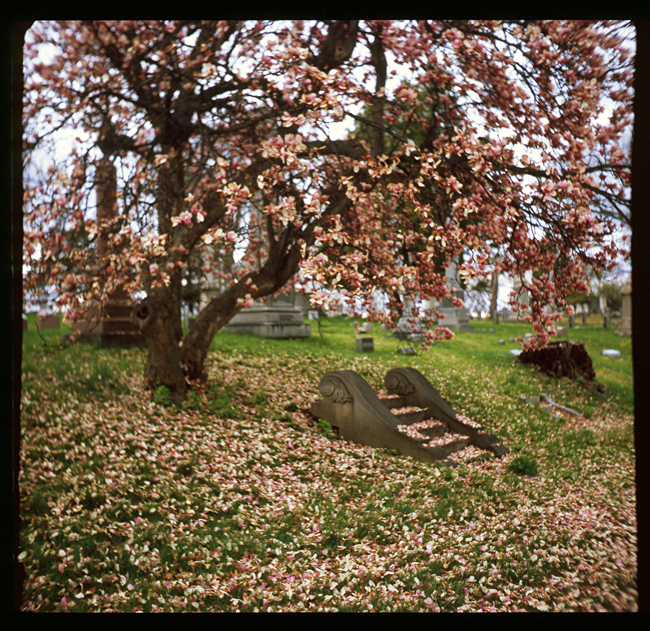
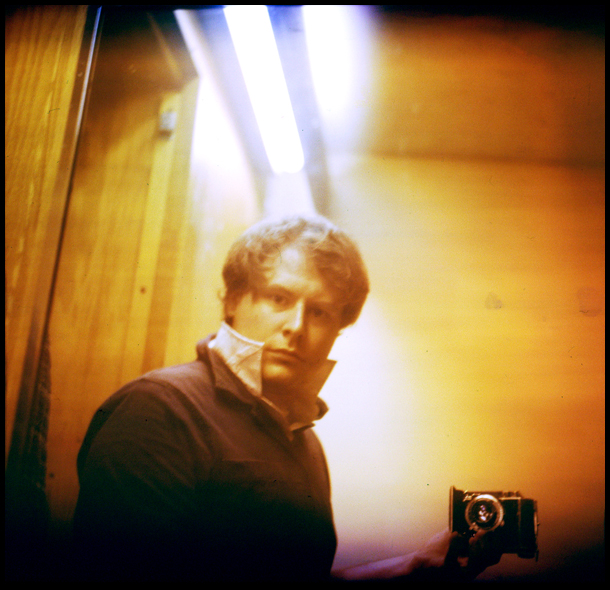


jlw
Rangefinder camera pedant
literiter said:To achieve parralax correction the lens seems to reposition itself with respect to the finder.
Correct. This is done via parallelogram arms on the front standard. The Certo is the only camera I can think of in which parallax correction is handled by moving the lens to match the finder, rather than vice-versa.
I admit I've never handled a Certo (although I'd like to, given my interest in cameras with interesting or unusual mechanisms.) I only remember this from a writeup in one of the Schneider books.
literiter
Well-known
Certo 6 problems.
Certo 6 problems.
In the right hands the Camera will provide some superb images. Remember that with a lens like this Tessar there is no need for the extra glass you will find in any retrofocus designs like a Hasselblad. The Compur shutter is very similar to that in the Hasselblad (the Prontor of course not so) The lens is a 2.8, 80mm Tessar. It seems it is very difficult to tell the difference between an image taken with this camera and my Hasselblad. Is is a very very nice lens system!
I am quite fond of my Certo 6 but there are issues with the camera, that any future owner will have to seriously consider.
The fact that the whole lens focuses and will correct for parralax, and the lens itself is really fantastic, but:
-The biggest negative issue is having to release the shutter before closing the camera or the shutter cocking lever will hang up in the closing latch mechanism located on the body. This appears to happen with the Prontor or the Compur shutter. Jurgen Kreckel of Certo6 fame also mentions this. I think this should not happen.
It may be that one could engineer the problem out with the Compur shutter but it may not be too easy with the Prontor. If you have one of these you'll know what I mean.
So whadda ya do if you want to put the camera away and the shutter is cocked? Do you release the shutter?
-The other issue may not be a reality but I think it is possible that the focusing mechanism may fail on these, rather abruptly from time to time. I just don't trust the thing.
The camera indeed has some plusses, but when push comes to shove I really do trust my rather ancient Super Ikonta B, with it's front cell focusing Tessar and non parralax correcting lens.
Perhaps if the Certo 6 had been in production longer the flaws could have been corrected.
Certo 6 problems.
In the right hands the Camera will provide some superb images. Remember that with a lens like this Tessar there is no need for the extra glass you will find in any retrofocus designs like a Hasselblad. The Compur shutter is very similar to that in the Hasselblad (the Prontor of course not so) The lens is a 2.8, 80mm Tessar. It seems it is very difficult to tell the difference between an image taken with this camera and my Hasselblad. Is is a very very nice lens system!
I am quite fond of my Certo 6 but there are issues with the camera, that any future owner will have to seriously consider.
The fact that the whole lens focuses and will correct for parralax, and the lens itself is really fantastic, but:
-The biggest negative issue is having to release the shutter before closing the camera or the shutter cocking lever will hang up in the closing latch mechanism located on the body. This appears to happen with the Prontor or the Compur shutter. Jurgen Kreckel of Certo6 fame also mentions this. I think this should not happen.
It may be that one could engineer the problem out with the Compur shutter but it may not be too easy with the Prontor. If you have one of these you'll know what I mean.
So whadda ya do if you want to put the camera away and the shutter is cocked? Do you release the shutter?
-The other issue may not be a reality but I think it is possible that the focusing mechanism may fail on these, rather abruptly from time to time. I just don't trust the thing.
The camera indeed has some plusses, but when push comes to shove I really do trust my rather ancient Super Ikonta B, with it's front cell focusing Tessar and non parralax correcting lens.
Perhaps if the Certo 6 had been in production longer the flaws could have been corrected.
literiter
Well-known
P C Headland said:Has anyone here tried fixing the RF mirror themselves? I've don the mirror in a non-coupled RF camera, but am hesitant to rip into this camera myself just yet.
I'll be taking my Certo 6 apart again this weekend. I'll take pictures of what I've done and try to post them.
literiter
Well-known
Certo 6 beamsplitter and mirror replace.
Certo 6 beamsplitter and mirror replace.
If you do any of this, and mess it up this is your problem. I'm just trying to let people see what I've done. Not what others can do.
Here are three images:
1) Remove the little leather cover from the counter. I would dampen the leather with alcohol and it should soften the shellac. Remove carefully and save. Under this is a small screw. Use a sharp screwdriver and carefully undo.
2) At the other end of the winder is a tiny screw holding a little plate which goes into the film spool. Remove this and the winder will pull out. Remove the two screws at either end of the top cover and wiggle free.
3) This is the cover for the beamsplitter. The two screws will remove.
Certo 6 beamsplitter and mirror replace.
If you do any of this, and mess it up this is your problem. I'm just trying to let people see what I've done. Not what others can do.
Here are three images:
1) Remove the little leather cover from the counter. I would dampen the leather with alcohol and it should soften the shellac. Remove carefully and save. Under this is a small screw. Use a sharp screwdriver and carefully undo.
2) At the other end of the winder is a tiny screw holding a little plate which goes into the film spool. Remove this and the winder will pull out. Remove the two screws at either end of the top cover and wiggle free.
3) This is the cover for the beamsplitter. The two screws will remove.
Attachments
literiter
Well-known
Certo 6 beamsplitter and mirror replace.
Certo 6 beamsplitter and mirror replace.
Images:
1) Is the beamsplitter. Remove this very carefully, you will want to preserve it intact to measure it for size. I measured it at: 20.11mm x 13.02mm x 2mm. I purchased the beamsplitter from Edmund Optics. Part # NT31-411.
-Cut using a carbide scribe and a wooden ruler. The mirror will damage easily. Keep everything super clean. use cotton gloves etc.
-You will want to use a tiny bit of glue or paint to hold it in. Don't use cyano glues.
2) Edmund has first surface mirrors as well but I used an old mirror from a old SLR.
3) This is the old mirror from the camera. The silver has completely corroded.
Aligning the thing is interesting. I had no trouble once I understood what was happening. Keep screwdrivers sharp. Use care with the mirror. I hope this will help someone.
Remember: Some will find this really easy, some won't. I am not resposible for any problems that may arise. I had my own in doing this. I am only showing you what I've done, and had sucess with.
The best of luck.
Certo 6 beamsplitter and mirror replace.
Images:
1) Is the beamsplitter. Remove this very carefully, you will want to preserve it intact to measure it for size. I measured it at: 20.11mm x 13.02mm x 2mm. I purchased the beamsplitter from Edmund Optics. Part # NT31-411.
-Cut using a carbide scribe and a wooden ruler. The mirror will damage easily. Keep everything super clean. use cotton gloves etc.
-You will want to use a tiny bit of glue or paint to hold it in. Don't use cyano glues.
2) Edmund has first surface mirrors as well but I used an old mirror from a old SLR.
3) This is the old mirror from the camera. The silver has completely corroded.
Aligning the thing is interesting. I had no trouble once I understood what was happening. Keep screwdrivers sharp. Use care with the mirror. I hope this will help someone.
Remember: Some will find this really easy, some won't. I am not resposible for any problems that may arise. I had my own in doing this. I am only showing you what I've done, and had sucess with.
The best of luck.
Attachments
literiter
Well-known
Some notes:
Edmund Optics is a great place to get stuff for cameras. beamsplitters, front surface mirrors, black flocking tools, etc. etc.
A "beamsplitter" is merely a partially reflective mirror. In this case 50%.
To replace the leather use some shellac as glue.
Use really sharp screwdrivers in Certo Sixes because the slots seem to be very thin.
If a screw seems too tight, try a drop of acetone or alcohol on the head of it which may soften the glue and let you get it out. You can also try heating a screwdriver with a candle or small torch till it will melt plastic, then apply a tiny bit of heat sink compound (from electronics suppliers) to the screw. When the screwdriver is inserted into the slot the heat will trasfer to the screw and voila.. if it's gonna come out, this will do it.
Edmund Optics is a great place to get stuff for cameras. beamsplitters, front surface mirrors, black flocking tools, etc. etc.
A "beamsplitter" is merely a partially reflective mirror. In this case 50%.
To replace the leather use some shellac as glue.
Use really sharp screwdrivers in Certo Sixes because the slots seem to be very thin.
If a screw seems too tight, try a drop of acetone or alcohol on the head of it which may soften the glue and let you get it out. You can also try heating a screwdriver with a candle or small torch till it will melt plastic, then apply a tiny bit of heat sink compound (from electronics suppliers) to the screw. When the screwdriver is inserted into the slot the heat will trasfer to the screw and voila.. if it's gonna come out, this will do it.
P C Headland
Well-known
Thanks for that, it is really useful information. I cut a new RF mirror or beamsplitter for an Agifold, and had no problems with that. As one glass guy told be, don't be afraid when cutting the glass, and it will cut/break exactly where you want - be timid, and it will break where you don't want it to!
Here some of images I took with the Certo Six the other weekend of buildings on the waterfront and Civic Square in Wellington. TriX 400 @ 400 in PC-TEA 1+50:



Here some of images I took with the Certo Six the other weekend of buildings on the waterfront and Civic Square in Wellington. TriX 400 @ 400 in PC-TEA 1+50:



Solinar
Analog Preferred
Very nice architectural images. When done with some foresight, I'm a big fan of reflective shots.
literiter
Well-known
These pictures are really marvelous. You have a very nice camera. There will be a lot of Hasselblads wondering where they went wrong.
The thing I marvel about, with these cameras, is their remarkable simplicity. Perhaps, once the rangefinder issues are dealt with we may marvel at their remarkable reliability.
I have some Super Ikonta "Bs" and "Cs" that I've redone, as well. The focus on these cameras has withstood the test of time but the lack of parallax compensation is unfortunate.
I cannot tell, myself, but I believe that the lens sharpness of my Certo Six will be somewhat superior.
My home is in a mountainous area with many opportunities for scenic images. I hike fairly often, but being a little older now, I've become a little more lazy and instead of taking my Hasselblad I will just pop a folding camera in my pack, add some water and a lunch and away I go.
When you cut glass as thin as this 2mm thick beamsplitter there are a few things to consider if you haven't.
-I used a very sharp carbide machinist's scribe. I Used a piece of flat hard masonite with a piece of white writing paper on top of it as a cutting surface. One quick, purposfull stroke as your glass guy said. Don't cut on the silvered side.
The thing I marvel about, with these cameras, is their remarkable simplicity. Perhaps, once the rangefinder issues are dealt with we may marvel at their remarkable reliability.
I have some Super Ikonta "Bs" and "Cs" that I've redone, as well. The focus on these cameras has withstood the test of time but the lack of parallax compensation is unfortunate.
I cannot tell, myself, but I believe that the lens sharpness of my Certo Six will be somewhat superior.
My home is in a mountainous area with many opportunities for scenic images. I hike fairly often, but being a little older now, I've become a little more lazy and instead of taking my Hasselblad I will just pop a folding camera in my pack, add some water and a lunch and away I go.
When you cut glass as thin as this 2mm thick beamsplitter there are a few things to consider if you haven't.
-I used a very sharp carbide machinist's scribe. I Used a piece of flat hard masonite with a piece of white writing paper on top of it as a cutting surface. One quick, purposfull stroke as your glass guy said. Don't cut on the silvered side.
literiter
Well-known
Certo Six compared to Ikonta.
Certo Six compared to Ikonta.
I have one Certo Six and 4 Super Ikonta Bs. I have ovehauled all these cameras. I'm not a professional camera tech, I just like to work on cameras.
If anyone is interested here is my comparison of these two cameras.
Certo Six = C6
Zeiss Super Ikonta B = ZI
C6- The body is a casting and has a nice solid feel to it. The camera is a little more compact than the ZI. No strap lugs.
ZI- The body is also a casting and has a nice solid feel to it. The body has strap lugs.
A substantial camera.
C6-The struts are quite substantial, stainless steel and machined to very high tolerances. Very, very nice.
ZI-The struts are stamped metal, chrome plated and function very well. They do the job.
C6-Focussing mechanism:
The whole front standard moves with respect to the film plane. To focus closely the lens raises slightly to compensate for paralax. The distance is transferred to a dial atop the camera. Very nice.
The focus lever is situated very near the tripod mount. When a tripod is attached it will become very hard to focus.
Internally the focusing mechanism is relatively flimsy and will be easy to knock out of adjustment. The mirrors must always be replaced. Not hard to do but you must do it.
Brighter rangefinder than the Zeiss.
ZI-focussing mechanism:
Front cell focusing, no paralax compensation. Once adjusted for focus hard to knock out of adjustment however. The whole focus mechanism is complex but very well made. Very seldom do we have issues with mirror desilvering. Rangefinder not as bright as the Certo six.
C6-Lens:
My camera has a Zeiss Tessar 80mm f2.8 coated lens. Really nice edge to edge sharpness at all focal ranges and apertures. Front standard moves to focus. This is why you buy the Certo Six. Hard to beat this stuff.
ZI-Lens:
My cameras all have coated and uncoated Zeiss Tessars. They are all sharp at infinity but seem to get a little soft as they focus closer. These lenses are beautiful and adequately sharp but must be a compromise to accommodate the focusing mechanism.
C6-Shutter:
Prontor. The shutter itself is fine but, on this camera it poses a serious problem. The cocking mechanism will actually interfere with the door latching mechanism when cocked. When the shutter is cocked, do not close the lens door, it will hang up. Some of these cameras come with the Compur shutter, it may not be an issue with the Compur but I don't know. With my camera and the Prontor it is a stupid system.
ZI-Shutter:
Synchro Compur. Very nice, no issues, just close the camera.
C6-Film advance:
The film advance on the Certo Six is actually more confusing than the Super Ikonta B. As well, I don't think it is as well made as the Super ikonta. The Certo uses a lever to advance the film which will speed things up a little. You need two strokes of this lever to advance the film. Pay attention because there is no stop after two strokes. (is this just my camera?) The film counter will give you 12 frames.
ZI-Film advance:
Not quite as confusing as the Certo Six. When cleaned and lubricated the advance is smoother and more postive than the Certo Six. Internally the parts are beautifully machined and well designed. Even though the film advance on my ZIs only give 11 frames, (you loose one) I trust it more.
C6-Camera case:
Made of thin, apparently inexpensive leather. The screw on the base of the case to hold the camera in will come off and be easily lost. Since the camera has no strap lugs you must use the case if you want to hang around your neck. Really junky case.
ZI-Case:
Very well made from very good leather. All my ZI cases had to be restitched but this was easy to do. On one camera the front of the case is detachable. Very sturdy well made cases.
There are good features on both cameras. Stopped down to f8 or so the Ikonta will perform as well as the Certo. The Certo has the edge with it's glorious lens and focus mechanism, no question, but the general egonomics and manufacture makes the good old Super Ikonta B a better camera for general use.
Certo Six compared to Ikonta.
I have one Certo Six and 4 Super Ikonta Bs. I have ovehauled all these cameras. I'm not a professional camera tech, I just like to work on cameras.
If anyone is interested here is my comparison of these two cameras.
Certo Six = C6
Zeiss Super Ikonta B = ZI
C6- The body is a casting and has a nice solid feel to it. The camera is a little more compact than the ZI. No strap lugs.
ZI- The body is also a casting and has a nice solid feel to it. The body has strap lugs.
A substantial camera.
C6-The struts are quite substantial, stainless steel and machined to very high tolerances. Very, very nice.
ZI-The struts are stamped metal, chrome plated and function very well. They do the job.
C6-Focussing mechanism:
The whole front standard moves with respect to the film plane. To focus closely the lens raises slightly to compensate for paralax. The distance is transferred to a dial atop the camera. Very nice.
The focus lever is situated very near the tripod mount. When a tripod is attached it will become very hard to focus.
Internally the focusing mechanism is relatively flimsy and will be easy to knock out of adjustment. The mirrors must always be replaced. Not hard to do but you must do it.
Brighter rangefinder than the Zeiss.
ZI-focussing mechanism:
Front cell focusing, no paralax compensation. Once adjusted for focus hard to knock out of adjustment however. The whole focus mechanism is complex but very well made. Very seldom do we have issues with mirror desilvering. Rangefinder not as bright as the Certo six.
C6-Lens:
My camera has a Zeiss Tessar 80mm f2.8 coated lens. Really nice edge to edge sharpness at all focal ranges and apertures. Front standard moves to focus. This is why you buy the Certo Six. Hard to beat this stuff.
ZI-Lens:
My cameras all have coated and uncoated Zeiss Tessars. They are all sharp at infinity but seem to get a little soft as they focus closer. These lenses are beautiful and adequately sharp but must be a compromise to accommodate the focusing mechanism.
C6-Shutter:
Prontor. The shutter itself is fine but, on this camera it poses a serious problem. The cocking mechanism will actually interfere with the door latching mechanism when cocked. When the shutter is cocked, do not close the lens door, it will hang up. Some of these cameras come with the Compur shutter, it may not be an issue with the Compur but I don't know. With my camera and the Prontor it is a stupid system.
ZI-Shutter:
Synchro Compur. Very nice, no issues, just close the camera.
C6-Film advance:
The film advance on the Certo Six is actually more confusing than the Super Ikonta B. As well, I don't think it is as well made as the Super ikonta. The Certo uses a lever to advance the film which will speed things up a little. You need two strokes of this lever to advance the film. Pay attention because there is no stop after two strokes. (is this just my camera?) The film counter will give you 12 frames.
ZI-Film advance:
Not quite as confusing as the Certo Six. When cleaned and lubricated the advance is smoother and more postive than the Certo Six. Internally the parts are beautifully machined and well designed. Even though the film advance on my ZIs only give 11 frames, (you loose one) I trust it more.
C6-Camera case:
Made of thin, apparently inexpensive leather. The screw on the base of the case to hold the camera in will come off and be easily lost. Since the camera has no strap lugs you must use the case if you want to hang around your neck. Really junky case.
ZI-Case:
Very well made from very good leather. All my ZI cases had to be restitched but this was easy to do. On one camera the front of the case is detachable. Very sturdy well made cases.
There are good features on both cameras. Stopped down to f8 or so the Ikonta will perform as well as the Certo. The Certo has the edge with it's glorious lens and focus mechanism, no question, but the general egonomics and manufacture makes the good old Super Ikonta B a better camera for general use.
Last edited:
Share:
-
This site uses cookies to help personalise content, tailor your experience and to keep you logged in if you register.
By continuing to use this site, you are consenting to our use of cookies.


